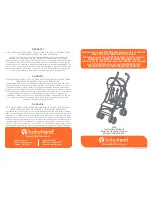
Instruction Manual
D102748X012
DLC3010 Digital Level Controller
Configuration
May 2018
70
the variations as small a percentage of calibrated span as possible.) Then calculate an alarm threshold that will prevent
vessel over‐ or under‐flow at the worst case error.
Extreme Process Temperatures
For applications that will run at extreme temperatures, the effect of process temperature on the torque tube must be
taken into account. Best results are obtained by running the torque tube calibration at actual process temperature.
However, the decrease in spring rate with temperature can be simulated at room temperature by increasing the load
on the torque tube during room‐temperature calibration. This will produce the same deflection that would occur at
actual process conditions. This compensation is theoretical and not perfect, but is still an improvement over ambient
calibration with no attempt at compensation.
Note
For additional information, refer to the Simulation of Process Conditions for Calibration of Fisher Level Controllers and
Transmitters instruction manual supplement (
or Local Business Partner,
or at www.fisher.com.
Temperature Compensation
If the process temperature departs significantly from calibration temperature, you will need to apply a correction
factor. Interpolate the correction factor from the material‐specific tables of theoretical normalized modulus of rigidity
versus temperature, as described in the Simulation of Process Conditions for Calibration of Fisher Level Controllers and
Transmitters instruction manual supplement (
). Multiply the measured torque tube rate (editable in the
review menu under factory settings) by the correction factor and enter the new value. When you cannot calibrate at
process temperature this approach allows a better approximation of the actual torque tube behavior at process
conditions.
Note
In DD Rev 4 the Change Torque Rate and Pre-compensate Torque Rate procedures provide the option to use the stored torque rate
compensation tables to compute and store this correction for you, based on a single target process temperature.
















































